 |
|
Grant Hindsley and Genna Martin, the two staff photographers for the Seattle PI. The PI published its last print edition in 2009 and has been online-only ever since.
|
Photojournalism isn’t what it was. Gone are the days when newspapers and photo agencies employed armies of staffers and stringers, around the world, and gone too (sadly) are the days when newspapers and current affairs magazines could rely on newsstand sales and advertising to invest in their reporting. There are fewer magazines around now than there were, and fewer newspapers. Those publications that do still exist tend to operate on tighter budgets, with fewer full-time staff members. Many have stopped printing altogether, and exist now only online. The Seattle PI is one of them.
‘Genna Martin and Grant Hindsley bring compassion and joy to their jobs and it shows in their work.’ (Sarah Rupp – Executive Producer, Seattle PI)
In this article, we go behind the scenes with Grant Hindsley and Genna Martin, staff photographers for the Seattle PI, following them on two assignments – the Seattle Women’s March, on January 21st, and the annual King County homelessness survey, a few days later.
January 21st
Grant Hindsley has the flu.
‘I slept between every one of my assignments yesterday, I was so out of it’. One of those assignments was a protest at the University of Washington where a man was shot and badly wounded, in circumstances that remain unclear. Grant captured images leading up to the confrontation, and graphic images of the aftermath, most of which will remain unpublished.
‘I feel a bit better today, but as soon as I stand still or sit down I start coughing again’. As I am about to find out, Grant doesn’t stand still or sit down much. As one half of a two-person photography team at the Seattle PI, there’s not much opportunity for time off.
 |
|
A line line of people, numbering more than 100,000, march through Seattle downtown during the 2017 Women’s March.
Photograph: Grant Hindsley for the Seattle PI. Used with permission.
|
Today, I’m tagging along with Grant as he covers the Women’s March, which is due to start in half an hour or so, from a park in Seattle’s Central District. In an early sign that the city’s attendance estimate of 50,000 people might be a little conservative, there are no cabs available, bus lines stretch for entire city blocks, and demand for ride-sharing services has sent Uber and Lyft prices sky-rocketing to more than $ 120 for the 2-mile trip.
Running late, we cram our gear into Grant’s girlfriend’s tiny car (‘it’s easier to park’) with the idea of jumping out as close as we can to the rally point, then walking the rest of the way. Hopefully, issuing parking tickets won’t prove to be a major law-enforcement priority for Seattle’s finest this Saturday.
‘Grant likes the slow photo, the in-between or off moments. He shoots the fringes of events, the stuff that people usually miss or overlook’ (Genna Martin)
As the first marchers join the route, photojournalists and camera-toting enthusiasts have formed a loose line at the vanguard of the group. They look a bit like a participants in a police search line, except that instead of having their eyes glued to the ground, the photographers have their lenses aimed at the marchers. And instead of walking forwards, they’re walking backwards.
An experienced photojournalist from another publication is attempting to corral the photographers to a traffic island a little further down the road, at a point where they can all get an unobstructed shot of the head of the march.
 |
|
Police clear the route ahead of the women’s march, as it begins.
Photograph: Grant Hindsley for the Seattle PI. Used with permission.
|
I ask Grant about working alongside other photographers at big events – is there some kind of honor code, when it comes to getting in the way of someone else’s shot, or lining up with them to take the same picture? ‘Not really, we tend to just work around each other, but it depends. If there are a lot of press at a relatively small event, then you’re all going to get the same picture anyway, that’s just the way it goes. Nobody has ever really gotten in my way when I’m working.’
‘Actually’ he says, after darting into the crowd and snapping a couple of shots, ‘that’s not true. Broadcast guys tend to shove you around a bit. If I ever have to throw an elbow out at anyone it’s usually at a broadcast guy’.
What’s in Grant’s bag?
- Canon EOS-1D X
- Canon EOS 5D Mark III
- Canon EF 35mm F2 IS (‘go-to’ lens)
- Canon EF 70-200mm F2.8 IS L II
- Canon EF 85mm F1.8
- Bag: Think Tank Shape Shifter (v1)
You must have shot a lot of protests at this point, I ask Grant – what kind of images do you try to capture?
‘My first internship was at the AP and one of the things I learned there was not to take pictures of signs. I mean, you can, and sometimes it just can’t be avoided, but signs are mostly just words, and if words were all we needed we’d just send writers to these things, not photographers’.
There’s no arguing with that logic, but signs are unavoidable at a march of this size. Almost everyone, from toddlers to wheelchair-bound pensioners is carrying some kind of a sign or banner. ‘What I try to do is avoid redundancy’, Grant tells me. But he’s not worrying about his employment prospects: ‘Images from protests can end up just all looking the same. I try to find pictures that will still make sense after the march is over, which put it in context. I shoot a lot more events than I used to so I look for something weird that tells the story.’
‘A lot of photographers lean back on the super wide at F16, and spray, but I never really shoot wider than 35mm.’ (Grant Hindsley)
‘The most meaningful encounters I’ve had come from intimate story telling. Sometimes that amounts to years of photographing the same subjects, sometimes it’s something quick that strikes deep’.
 |
|
A father and son watch the progress of the march through Seattle’s downtown.
Photograph: Grant Hindsley for the Seattle PI. Used with permission.
|
Initially though, Grant admits, he’s just grabbing as many pictures as he can, as the march starts winding through Seattle’s Central District, en route to the Seattle Center three and a half miles away. ‘My approach is to take a lot of pictures early on, to cover myself, and start sending them in before things get too busy. Once I know I’ve got a few images in the bag, that’s when I slow down and start looking for more interesting scenes’.
‘Anyone can take a pretty picture. It can be with a phone or with $ 100,000 of equipment, but everyone can do it with some practice. Photojournalists on the other hand, are trained in serendipity’ (Grant Hindsley)
Filing images on the go isn’t entirely straightforward. Grant plugs his battered iPhone directly into his Canon EOS 5D Mark III using a jerry-rigged USB cable and Lightning Port adapter, ingests images into his phone’s camera roll, then emails them back to the office. It’s slow, and the fragile wired connection breaks frequently. And literally.
 |
|
A participant in the march pauses to become the subject of a quick portrait.
Photograph: Grant Hindsley for the Seattle PI. Used with permission.
|
With one camera plugged into his phone, and a CF card clamped between his teeth, Grant continues shooting with his second camera, a Canon EOS-1D X, with a 35mm F2 attached. Both cameras and lenses are owned by the PI, but remain in his possession as his everyday kit, and get used for everything from taking pictures of an unseasonal snowstorm to Seahawks games. Cameras and lenses alike are shiny and scuffed from use.
 |
|
Governer Jay Inslee speaks to one of the participants in the Women’s March, in Seattle.
Photograph: Genna Martin for the Seattle PI. Used with permission.
|
Towards the end of the afternoon, Grant drops by the Seattle PI office to file some images. While he’s doing that, I meet up with Genna Martin – the other half of the PI photo team, who’s been covering the march too.
Genna was named 2015’s Best New Journalist by the regional chapter of the Society for Professional Journalists, and today, she’s filing images from inside the nearby Komo News Plaza, alongside Bettina Hansen from the PI’s main rival, The Seattle Times. They’re discussing an image shot earlier by another Seattle Times staffer, veteran photojournalist Alan Berner. Grant and I bumped into him on the march, posted up on a busy corner, standing on a step stool to get shots of the participants snaking along 4th Avenue.
 |
|
Photograph by Alan Berner, Seattle Times.
Used with permission (see the full Seattle Times gallery here)
|
In Bettina’s opinion ‘it’s the shot of the day’. Taken from a slightly elevated position (probably the step-stool), the picture shows the march receding to infinity. A relatively shallow depth of field highlights four figures standing side by side, wearing the pink ‘pussy hats’ that have become emblematic of the event. Walking into the sun, all four figures are also wearing sunglasses. There’s plenty of signage in the photograph, but the signs aren’t the main focal point of the image, and they’re mostly outside of the zone of focus.
So why is this such a good image? ‘It has everything’, Genna explains. ‘The symmetry, and the central positioning of the four main subjects. It has everything you’d want from a picture of a march. And it’s not a sign picture’.
‘I hate sign shots. I hate protest photos that are just about the sign, and not about the person holding it.’ (Genna Martin)
Another Seattle Times photographer, Erika Schultz, is also here covering the march. Between them, Erika and Bettina have almost 25 years of professional experience, and have been recognized with several major awards. Alan Berner adds another 30+ years of experience, and even more awards, including the title of NPPA Regional Press Photographer of the Year seven times. The two publications might be rivals, but the only rivalries in this group are friendly. Every year, the PI’s ‘Photographs of the Year’ slideshow is hosted in a bar run by Bettina’s fiancé.
The march ends around sunset, when the final participants arrive at Seattle’s iconic Space Needle. Genna and I join up with Grant, and together we shoot a few pictures of the crowds before heading off to find some dinner. The last of the day’s images are filed by 7pm, over slices of pizza in Grant’s apartment.
See Grant and Genna’s images from the march
January 27th
A few days after the Women’s March, on January 27th, I join Genna for a very different assignment – shooting the annual King County Point in Time (PIT) Count. This is a survey of homelessness, which takes place all over King County on a single night (in fact a very early morning) in January.
 |
|
Volunteers gather in the early hours of the morning, before embarking on Seattle’s annual ‘Point in Time’ homelessness count.
Photograph: Genna Martin for the Seattle PI. Used with permission.
|
Tonight, between 2-6am, volunteers will comb through Seattle, counting sleeping bags, tents, occupied vehicles and encampments. Once collated, the results of the count will become one of the metrics used to determine public policy around homelessness. Grant shot last year’s count, and when it came up in conversation a few days ago he offered me the kind of cheery ‘well, I hope you have fun!’ that strongly suggests that he thinks I won’t.
‘Genna is a marvelous, classic photojournalist but with a fresh twist. So often she sees things I just glance over. Her eye is always on the story and the people and she really feels for the people she photographs.’ (Grant Hindsley)
Volunteers gather at a center on Alaska Way at 2am. When we arrive, the center is packed with volunteers, guides, and puffy-eyed journalists. Across the crowded main room, several boom microphones are visible, arcing over the assembly like construction cranes. Local broadcast news crews are doing the rounds, alongside several photographers – including Erika Schultz of the Seattle Times.
There’s another crew here, too. A big one, made up of strikingly similar-looking men carrying new and very expensive equipment. They’re doing their best, pushing through the crowded room with stabilized Sonys held aloft, attempting overhead tracking shots with pivoted carbon-fiber stabilizing rigs that resemble hip-bones from some prototype killer robot. They’re wearing secret service-style earpieces, and won’t say who they’re shooting for.
What’s in Genna’s Bag?
- Canon EOS-1D X
- Canon EOS 5D Mark III
- Canon EF 24-70mm F2.8 II
- Canon EF 70-200mm F2.8 II
- Canon EF 35mm F1.4 II
- Canon EF 50mm F1.8
- Safety glasses and mask (for protest coverage)
- Duct tape.
There’s a rumor that the mayor is going to address the media before the groups of volunteers leave for their search areas, but he’s running late. He might not turn up at all, but should we wait, I ask Genna, to see if he shows up? It’s already close to 3am and she’d rather get going. ‘I’ve seen the mayor plenty of times, and I’ve not seen him even more times than that’.
 |
|
A group of volunteers consults a map.
Photograph: Genna Martin for the Seattle PI. Used with permission.
|
Our group is assigned to a relatively affluent area of Seattle, near the University of Washington. Mostly made up of members of a UW ‘Service Sorority’, our group is impressively perky for 3am, and apparently they’re planning on attending class in a few hours. As we start walking, I’m at the opposite end of the stamina scale, and I get the sense that Genna is somewhere in the middle.
 |
|
One of several tents under a bridge in our search area. This is a non-invasive survey, so all photographs must be taken using only natural light.
Photograph: Genna Martin for the Seattle PI. Used with permission.
|
Most of our search area is residential, and even though it’s a clear, relatively mild night, very few people are sleeping outdoors. Despite the lack of activity, Genna and I are quite enjoying ourselves, combing through the bushes with by the light of our iPhone screens, and peering into alleyways.
It is, we decide, a bit like a scavenger hunt. Albeit one which, we shamefully concede, ‘you shouldn’t really want to win’.
‘Realising that you don’t have to shoot everything is the first step. And from there, being able to calm down and focus in on particular moments, and good photos, rather than just photos that show what’s happening’ (Genna Martin)
Inevitably, the few times when we do come across a huddled figure, or a tent, are occasions for muted celebration. The volunteers get to put a checkmark in a box on their list, and Genna gets to take pictures of something actually happening. The survey is meant to be non-invasive. The aim is to observe and report, not engage or disturb. I hope we didn’t wake anyone up.
Compared to the women’s march, Genna takes relatively few images. As we were trudging through the darkened streets, she shared some good advice, from Dan Bates, one of her former colleagues at the Everett Herald: ‘Look for hundred dollar bills rather than a bunch of quarters’ I.e. it’s better to get one good picture than lots of mediocre ones.
 |
|
Volunteers record the location of a tent found during the survey.
Photograph: Genna Martin for the Seattle PI. Used with permission.
|
Genna got her start at the Everett Herald in 2011. I asked her why she decided to take up photojournalism: ‘When I was in 8th grade, my class went on a trip to Washington D.C. We went to the Newseum and there was an exhibit there on Pulitzer Prize winning photos and the stories behind how they were made. I was enthralled and from that moment on I was set on having a career as a photojournalist’.
Her work has made a difference, too. In 2014, when Oso resident Tim Ward lost his wife and his home in a landslide, Genna’s work on a profile on Ward lead to hundreds of donations from members of the public, to help him get back on his feet. Ward recently re-married and moved to Florida.
‘I think most of the photos we take will make a difference to someone at some point. Whether its the person in the photo who gets to feel special because they’re in the news for a day, or a historian 50 years from now’ (Genna Martin)
Of all the assignments that Genna has done since joining the PI, tonight’s is probably among the least eventful. As well as the Oso landslide, she photographed the horrific collision of an amphibious ‘Duck’ tour vehicle on Seattle’s Aurora Bridge in 2015, and she’s been in harm’s way a number of times, covering natural disasters, protests and violent incidents. Her forearm still bears a vivid scar caused by a police stun grenade deployed during Seattle’s May Day protests in 2016, and a couple of nights after the homelessness count, she’ll be ‘lightly pepper-sprayed’ (her words) while covering a sit-in at Seattle-Tacoma International Airport.
 |
|
Protesters occupy an area of Sea-Tac airport, following the overnight imposition of a travel ban by the Trump Administration.
Photograph: Genna Martin for the Seattle PI. Used with permission.
|
For his part, over the course of a 7-year career, Grant has survived his fair share of protests too, outrun some ‘wicked storm fronts’ and been chased with a machete.
Tonight is quiet by comparison. At 5am we decide we’ve done enough and head home, leaving our group to complete the survey. On the way back to Genna’s car, we spot another group of volunteers at the end of a road, the outline of a robot-like stabilizing camera rig clearly visible in the early morning mist, silhouetted under a street light. Good luck to them.
I’m fast asleep by the time Genna has her images processed and uploaded to the PI’s servers.
The Seattle PI has a proud tradition of high-quality photojournalism and despite tight budgets and a small staff, both photographers turn in high-quality work, day after day and week after week.
Genna offered her thoughts on why their job matters:
‘Photojournalists are the witnesses of history. They go to things so you (the public) don’t have to. They provide a living record. A photo of a person or event is always going to provide a better connection to the reader than words will’.
In Grant’s words: ‘a photograph is one, single powerful moment in time. Writing is an analysis after the fact. Video is wonderful, but it is not timeless and it is harder to take in than a photograph.’
 |
| Oh the glamor. Grant rests his back while Genna organizes images from the Seattle Center lawn, at the end of the women’s march. |
As Genna told me, ‘seeing is believing’ might be a cliche, but there’s a reason for that. Just recently, her photographs of the protest at Sea-Tac airport were used to prove that Port of Seattle police pepper-sprayed protesters – something they initially denied.
Following Grant and Genna was an amazing experience. Although I was shooting literally alongside them, both photographers captured images which I simply didn’t see. Grant describes it as ‘a learned ability to be in the right place at the right time’, to which I would add ‘and point your camera at the right place, at the right time, too’.
Our thanks to Genna Martin, Grant Hindsley and Sarah Rupp of the Seattle PI. Also Alan Berner, Bettina Hansen and Erika Schultz of the Seattle Times for their help in putting together this article.
Articles: Digital Photography Review (dpreview.com)




















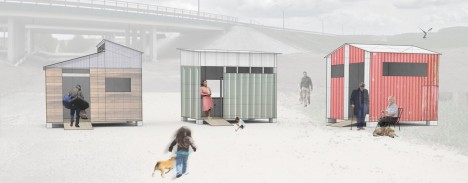
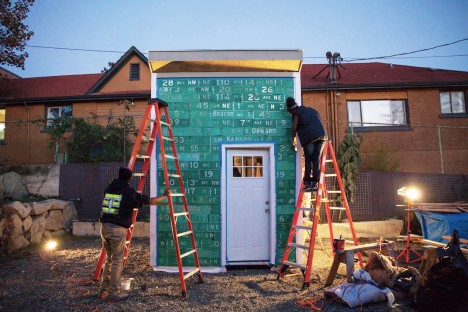
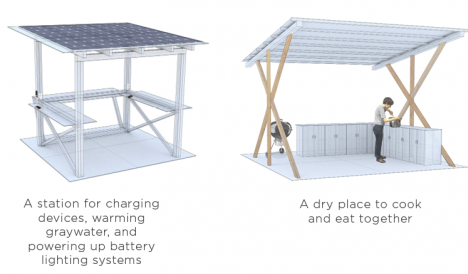
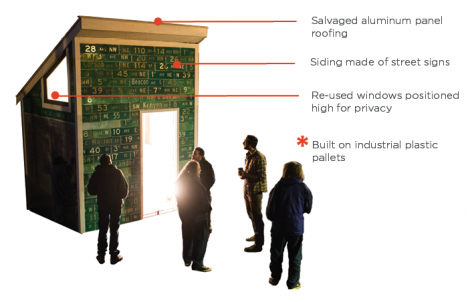
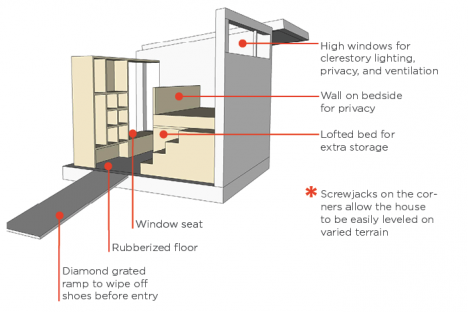
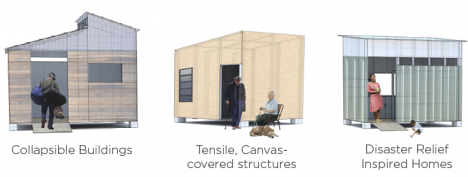
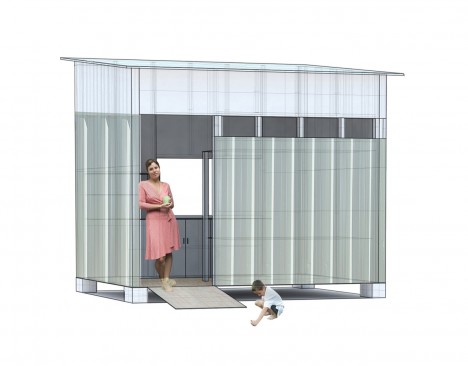
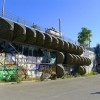
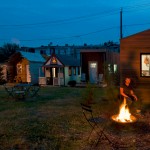
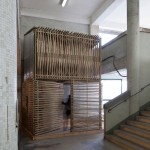












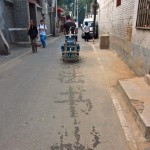
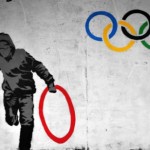
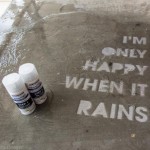
You must be logged in to post a comment.